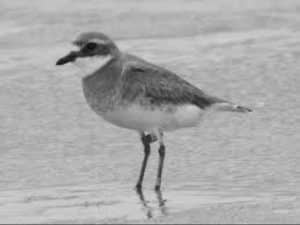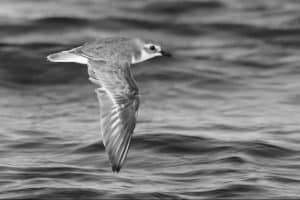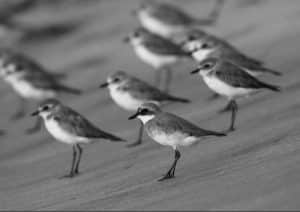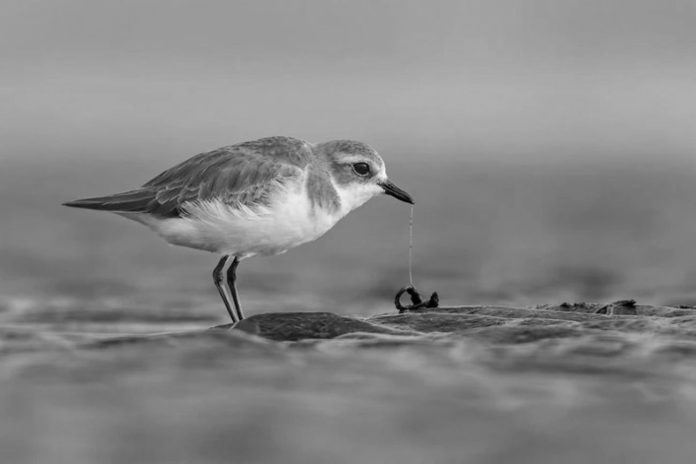Introduction to the Lesser Sand-Plover
The Lesser Sand-Plover (Charadrius mongolus) is a small shorebird belonging to the plover family, which includes sandpipers and snipes. It is a migratory bird, breeding in northern Asia, from eastern Siberia to Mongolia, and wintering in tropical and subtropical coastal areas in Africa, Asia, and Australia. The Lesser Sand-Plover in Tanzania is a common winter visitor to Tanzania, where it can be found along the coast, on sandy beaches, mudflats, and estuaries.
Habitat and Distribution of the Lesser Sand-Plover in Tanzania

The Lesser Sand-Plover is a common winter visitor to Tanzania, where it can be found along the coast, on sandy beaches, mudflats, and estuaries. It is also recorded inland, sometimes in large numbers, on shallow freshwater pools and flooded fields. The Lesser Sand-Plover is distributed throughout the country, from the border with Kenya in the north to Mozambique in the south. It is more common on the mainland coast, but can also be found on the islands of Zanzibar and Pemba.
Physical Characteristics of the Lesser Sand-Plover
The Lesser Sand-Plover is a small bird, measuring about 15-17 cm in length and weighing around 40-50 grams. It has a round head, short neck, and a short, straight, black bill. Its body is compact, with a short tail and wings that are pointed at the tips. The Lesser Sand-Plover has a distinctive appearance, with a white forehead and supercilium, a brownish-grey crown, nape and upperparts, and a white underbelly. In breeding plumage, the male has a black breast band, while the female has a brownish-grey breast band. Juvenile birds have a more spotted appearance, with brownish-black spots on their upperparts and breast.
Behavior and Feeding Habits of the Lesser Sand-Plover
The Lesser Sand-Plover is a diurnal bird, meaning that it is active during the day. It is a social bird, often seen in small flocks, and is known for its distinctive call, a sharp “weet-weet” or “ti-ti-ti”. The Lesser Sand-Plover feeds on small invertebrates, such as insects, crustaceans, mollusks, and worms, which it picks from the sand or mud with its bill. It also probes in the sand with its bill to uncover hidden prey. The Lesser Sand-Plover is adapted to its coastal habitat, with its short legs allowing it to move quickly over sandy or muddy surfaces, and its cryptic plumage providing camouflage from predators.
Conservation Status and Threats to the Lesser Sand-Plover in Tanzania

The Lesser Sand-Plover is listed as a species of Least Concern on the IUCN Red List of Threatened Species, meaning that it is not currently at risk of extinction. However, like many other migratory birds, the Lesser Sand-Plover faces threats throughout its range, including habitat loss and degradation, pollution, climate change, and disturbance from human activities. In Tanzania, coastal development, overfishing, and disturbance from tourism and recreation are major threats to the Lesser Sand-Plover and other shorebirds.
Best Places to Spot the Lesser Sand-Plover in Tanzania
The Lesser Sand-Plover can be found in many coastal areas of Tanzania, including Dar es Salaam, Bagamoyo, Pangani, Tanga, and Kilwa. It is also common on the islands of Zanzibar and Pemba. Some of the best places to spot the Lesser Sand-Plover in Tanzania are Saadani National Park, Mikumi National Park, and the Selous Game Reserve. These areas offer a variety of coastal habitats, including sandy beaches, mudflats, and estuaries, where the Lesser Sand-Plover can be observed feeding and socializing with other shorebirds.
Tips for Birdwatching and Photographing the Lesser Sand-Plover
If you are interested in observing and photographing the Lesser Sand-Plover, there are a few tips that can help you get the best experience. Firstly, it is important to respect the birds’ habitat and behavior, and to avoid disturbing them. Secondly, bring binoculars or a spotting scope to get a closer look at the bird without getting too close. Thirdly, choose a good vantage point, such as a hide or a spot with natural cover, to observe the bird without being seen. Fourthly, use a long lens or a camera with a good zoom to capture detailed images of the bird. Finally, be patient and observant, and enjoy the beauty of this wonderful bird.
Lesser Sand-Plover vs Other Plover Species in Tanzania
Tanzania is home to several other plover species, including the Greater Sand-Plover, the Kentish Plover, the Three-banded Plover, and the White-fronted Plover. While some of these species look similar to the Lesser Sand-Plover, there are a few key differences that can help you identify them. The Greater Sand-Plover is larger and has a longer bill than the Lesser Sand-Plover. The Kentish Plover has a shorter bill and a distinctive black band across its chest. The Three-banded Plover has a white forehead and a distinctive three-band pattern on its chest. The White-fronted Plover has a white forehead and a black chest band.
Lesser Sand-Plover Research and Ongoing Conservation Efforts

Research on the Lesser Sand-Plover in Tanzania is limited, but ongoing conservation efforts are being made to protect the species and its habitat. The Tanzania Bird Atlas project, a collaboration between the Tanzania Bird Atlas Committee and the BirdLife International Partnership, aims to map the distribution and abundance of bird species in Tanzania, including the Lesser Sand-Plover. The project relies on citizen science, encouraging birdwatchers and other nature enthusiasts to contribute observations and data. Other conservation efforts in Tanzania include the establishment of protected areas, such as Saadani National Park and Mikumi National Park, and the promotion of sustainable tourism and fisheries practices.
Conclusion: Appreciating the Beauty of the Lesser Sand-Plover in Tanzania
The Lesser Sand-Plover is a small wonder along Tanzanian shores, with its unique physical characteristics and interesting feeding habits. While it is not currently at risk of extinction, the species faces threats from habitat loss and degradation, pollution, climate change, and human disturbance. By appreciating the beauty of the Lesser Sand-Plover and other shorebirds, and taking steps to protect their habitat and behavior, we can ensure that these small wonders continue to thrive along Tanzanian shores for generations to come.

































